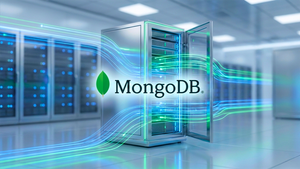
New Delhi, India – November 20, 2025 – India is rapidly forging ahead with an ambitious national strategy designed to democratize technology, making advanced computing facilities and artificial intelligence accessible to every citizen. This comprehensive initiative, spearheaded by programs like the IndiaAI Mission and the Semiconductor Mission, aims to break down barriers to innovation, foster inclusive growth, and position India as a global leader in the digital economy. At its core, the strategy provides highly subsidized access to high-performance computing resources, directly impacting the accessibility and development of crucial semiconductor technology within the nation.
The immediate significance of this strategy cannot be overstated. By ensuring that cutting-edge AI and computing power are no longer the exclusive domain of large corporations, India is cultivating a vibrant ecosystem where startups, researchers, and students can innovate freely. This not only accelerates domestic technological advancements but also fundamentally reshapes the global landscape of AI development, promoting a more equitable distribution of technological capabilities and reducing reliance on foreign infrastructure.
Unpacking India's Technological Blueprint: The Mechanics of Democratization
India's strategy is built on several pillars, with the IndiaAI Mission, launched in March 2024 with a substantial outlay of ₹10,371.92 crore over five years, being a cornerstone. A key component of this mission is the establishment of a vast, government-funded, GPU-powered computing facility. This national common computing facility boasts approximately 38,000 GPUs, available to researchers and students at an unprecedentedly low cost—less than one US dollar per hour. This pricing model dramatically undercuts global benchmarks, making high-performance computing (HPC) accessible to a broader demographic than ever before and effectively dismantling the economic barriers that traditionally limit access to such powerful resources.
Beyond raw computing power, the IndiaAI Mission also includes the IndiaAI Dataset Platform, which provides seamless access to anonymized datasets crucial for training AI models in Indian languages and contexts. Complementing this are Centres of Excellence for AI being established across vital sectors like healthcare, agriculture, education, and sustainable cities, designed to strengthen the domestic AI ecosystem. Furthermore, the government is actively promoting indigenous AI models and hardware, exemplified by the development of the THEJAS64 indigenous 64-bit SoC processor, underscoring a commitment to self-reliance and data sovereignty. This holistic approach significantly diverges from previous models where access to advanced computing and specialized hardware was largely dictated by market forces and the financial might of tech giants.
The Semiconductor Mission, launched in December 2021 with a $10 billion incentive fund, directly addresses semiconductor accessibility. It aims to build large-scale manufacturing, assembly, and design capabilities within India. The Design Linked Incentive (DLI) Scheme, a part of this mission, supports semiconductor startups and MSMEs by helping them recover design costs and scale commercialization, with a goal to nurture 100 chip design companies. This proactive government intervention, combined with initiatives like the promotion of open-source RISC-V processors in affordable devices such as Karnataka's "KEO" (an AI-powered PC priced at ₹18,999), ensures that the foundational hardware for advanced computing is both locally developed and economically viable for widespread adoption.
Reshaping the Tech Landscape: Impact on Companies and Competitive Dynamics
India's democratization strategy carries profound implications for AI companies, tech giants, and startups alike. Domestic startups and Micro, Small, and Medium Enterprises (MSMEs) stand to benefit immensely from subsidized computing resources and the DLI scheme. This levels the playing field, enabling smaller entities to compete with larger, well-funded corporations by significantly reducing their operational costs for AI development and chip design. The availability of a national common computing facility means that innovative ideas are no longer stifled by the prohibitive expense of acquiring or renting high-end GPUs.
For major tech giants and AI labs, India's push for indigenous capabilities and an open ecosystem presents both opportunities and competitive challenges. While companies like Micron Technology (NASDAQ: MU) and the Tata Group (NSE: TATAMOTORS) are already investing heavily in semiconductor fabrication, assembly, packaging, and testing projects within India, the rise of a robust domestic ecosystem could reduce the market dominance of established international players in certain segments. The focus on indigenous hardware and software fosters a competitive environment where local solutions gain prominence, potentially disrupting existing product pipelines and service offerings that rely heavily on imported technology. India's strategy aims to cultivate a market where innovation thrives from within, shifting market positioning and creating strategic advantages for local firms while attracting global investment into a burgeoning, self-sufficient tech hub.
A Broader Canvas: India's Role in the Global AI Narrative
This national strategy is not merely an economic endeavor; it represents a significant ideological shift within the broader AI landscape. It champions inclusive growth and digital empowerment as core tenets of technological progress, moving away from a model where innovation is concentrated in a few global tech hubs. By making AI and computing facilities affordable and accessible, India is setting a precedent for how developing nations can leverage technology to uplift their populations and address unique socio-economic challenges.
The impacts are wide-ranging: from bridging the digital divide through initiatives like Pradhan Mantri Gramin Digital Saksharta Abhiyan (PMGDISHA) to fostering a massive talent pool through expanded STEM education and AI labs in Tier 2 and Tier 3 cities. This focus on digital literacy and skill development ensures a continuous supply of engineers and researchers crucial for sustaining the semiconductor and AI sectors. While the strategy primarily focuses on positive outcomes, potential concerns might include the massive scale of implementation, ensuring sustained investment, and navigating complex geopolitical dynamics in the global semiconductor supply chain. Nevertheless, this initiative stands as a critical milestone, comparable to past breakthroughs that democratized internet access or personal computing, as it seeks to democratize the very infrastructure of future innovation.
The Road Ahead: Anticipating Future Developments
Looking ahead, the coming months and years promise significant milestones in India's technological journey. Three major semiconductor manufacturing facilities are slated to begin commercial production early next year, marking a crucial step towards self-reliance in chip fabrication. The IndiaAI Mission is expected to expand its Centres of Excellence, fostering more specialized AI applications across diverse sectors. Further developments under the DLI scheme will likely see more Indian startups transitioning from chip design to commercialization, strengthening the domestic intellectual property landscape.
Experts predict a continued surge in indigenous innovation, particularly in AI solutions tailored for Indian languages, agriculture, healthcare, and education. The proliferation of affordable, AI-powered devices built on open-source architectures like RISC-V is expected to accelerate, further deepening digital penetration. Challenges will undoubtedly include scaling these initiatives effectively across a vast and diverse nation, ensuring robust cybersecurity, and maintaining the pace of technological advancement amidst rapid global shifts. However, the current trajectory suggests that India is poised to become a formidable force in both AI development and semiconductor manufacturing, with its inclusive approach serving as a potential blueprint for other emerging economies.
A New Era of Accessible Innovation
India's national strategy to democratize technology through affordable computing facilities and a robust semiconductor ecosystem represents a transformative moment in the nation's technological history. The key takeaways are clear: a deliberate shift towards accessible innovation, a strong commitment to self-reliance in critical technologies, and a vision for inclusive digital empowerment. By strategically investing in GPU infrastructure, fostering indigenous chip design and manufacturing, and promoting digital literacy, India is not just catching up but actively shaping the future of global technology.
This development holds immense significance, as it challenges traditional models of technological development and offers a compelling alternative focused on broad-based access rather than centralized control. The long-term impact could see India emerge as a global leader in AI innovation, driven by a diverse and digitally empowered population. As the semiconductor plants come online and the IndiaAI Mission expands its reach, the world will be watching closely to see how this ambitious vision unfolds, potentially ushering in a new era of accessible and democratized technological progress.
This content is intended for informational purposes only and represents analysis of current AI developments.
TokenRing AI delivers enterprise-grade solutions for multi-agent AI workflow orchestration, AI-powered development tools, and seamless remote collaboration platforms.
For more information, visit https://www.tokenring.ai/.





